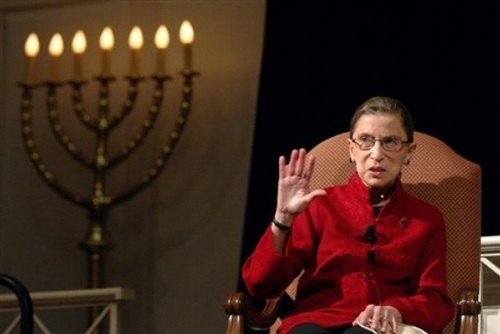2 Views
Chrysler Zombie Watch 7: What's Bothering Ruthie?
by
Steve Jakubowski
(IC: employee)
Published: June 9th, 2009
Share
The brilliant lawyer, author, and ex-blogger, Bill Patry (now senior copyright counsel at Google), wrote on his Patry Copyright Blog back in 2005 about the greatest Biblical scholar of all time, Rabbi Shlomo Yitzhak (whom everyone affectionately calls “ Rashi“).Bill wrote:Rashi is used as a learning device for children not because he is simple (he isn’t) but because of the unusual nature of his commentary. His commentary consists of very terse conclusions, but without the questions that prompted the conclusions. Children are left with the task of asking “What’s Bothering Rashi?”The “What’s Bothering Rashi?” approach to learning text is useful in analyzing statutes because it teaches one to ask the why of things, rather than as we almost always do, just read the literal words divorced from what the law would be like in their absence.Bill’s post came to mind in thinking about “What’s Bothering Ruthie?” that would prompt her to call a halt to a sale that remarkably worked its way from bankruptcy filing to cert. review in less time than it takes the average person to buy a used Town & Country. Here are a few ideas:
- Maybe she doesn’t like the lawyers across the street telling her ( as reported here by SCOTUS Blog) that “no court, including the Supreme Court, has the authority to hear a challenge by Indiana benefit plans to the role the U.S. Treasury played in the Chrysler rescue.” Tell that to Justice Marshall!
- Or maybe, like her predecessors during the Depression in the Schechter Poultry Corp. v. US case, she’s wondering whether ( as argued here by Ralph Nader) Congress abdicated the essential legislative functions with which it is vested by letting the Executive Branch alone structure and implement the deal.
- As noted in my Part I analysis, however, I doubt she’s losing sleep over whether the sale is a sub rosa plan or whether the absolute priority rule was violated.
Steve Jakubowski
More by Steve Jakubowski
Published June 9th, 2009 7:06 AM
Latest Car Reviews
Read moreLatest Product Reviews
Read moreRecent Comments
- EBFlex It will have exactly zero effect
- THX1136 What happened to the other companies that were going to build charging stations? Maybe I'm not remembering clearly OR maybe the money the government gave them hasn't been applied to building some at this point. Sincere question/no snark.
- VoGhost ChatGPT, Review the following article from Automotive News: and create an 800 word essay summarizing the content. Then re-write the essay from the perspective of an ExxonMobil public relations executive looking to encourage the use of petroleum. Ensure the essay has biases that reinforce the views of my audience of elderly white Trump-loving Americans with minimal education. Then write a headline for the essay that will anger this audience and encourage them to read the article and add their own thoughts in the comments. Then use the publish routine to publish the essay under “news blog” using Matt Posky listing the author to completely subvert the purpose of The Truth About Cars.
- VoGhost Your source is a Posky editorial? Yikes.
- Fed65767768 Nice find. Had one in the early-80s; loved it but rust got to it big time.Still can't wrap my head around $22.5K for this with 106,000 km and sundry issues.Reluctant (but easy) CP.


































Comments
Join the conversation
So, what's bothering Ruthie? Absolutely nothing.
Pch101 Would you please start your own blog. It would be well worth reading.